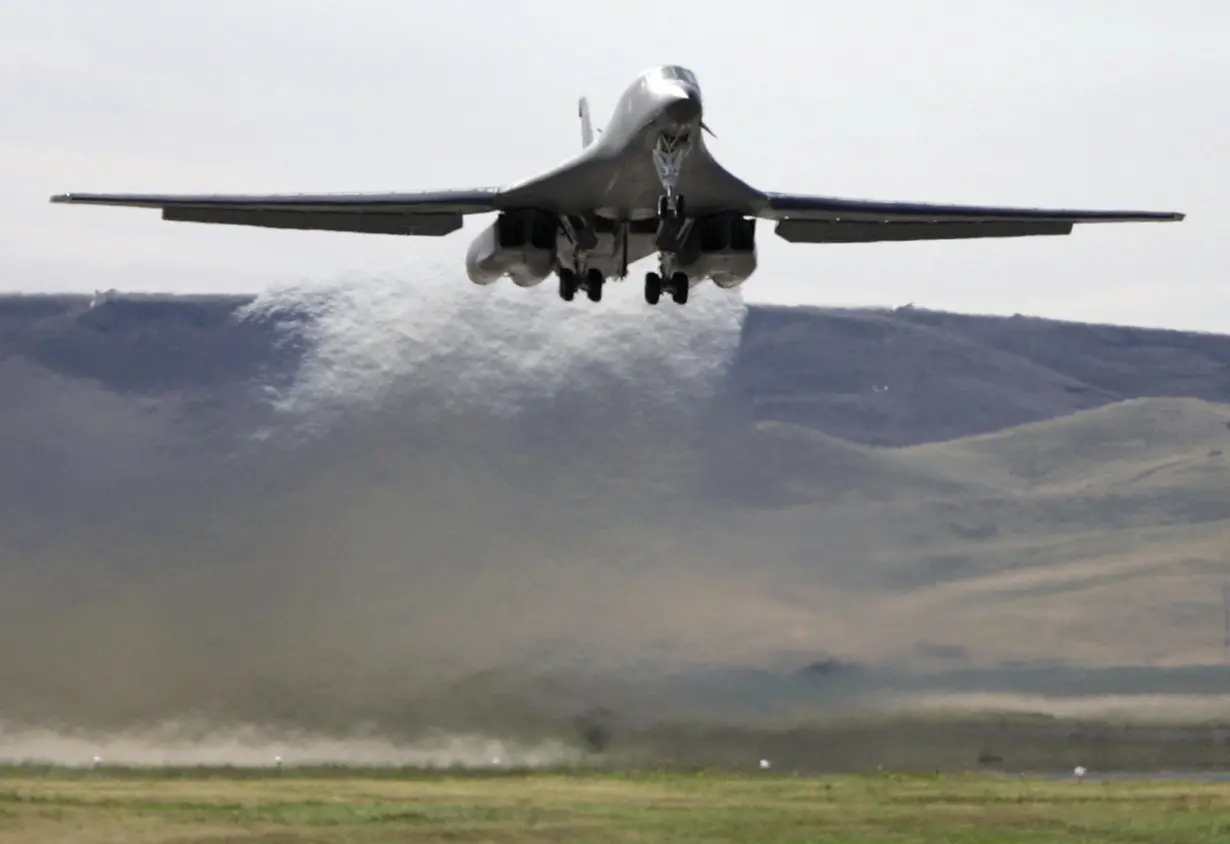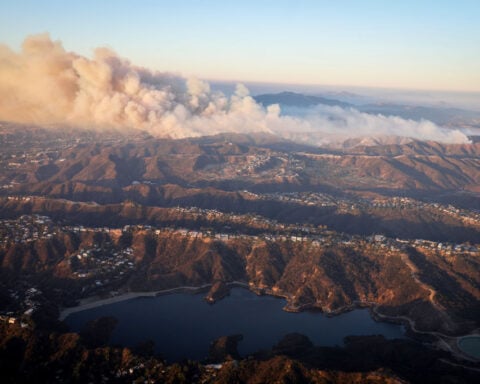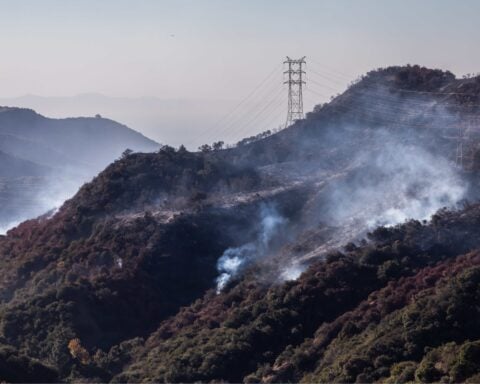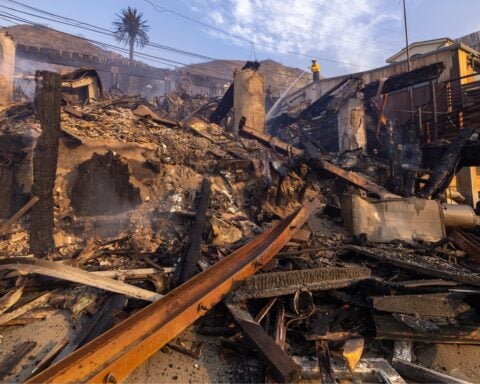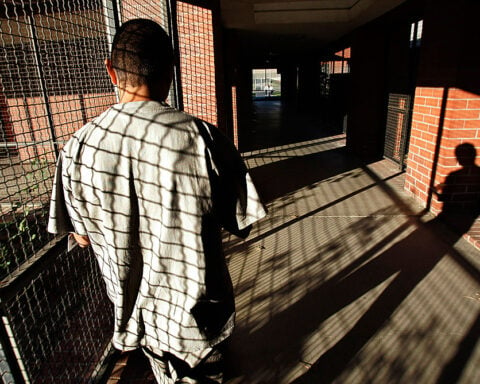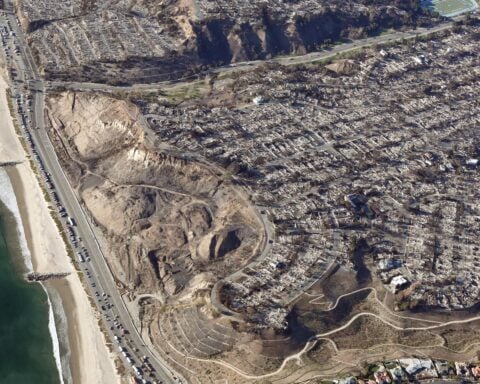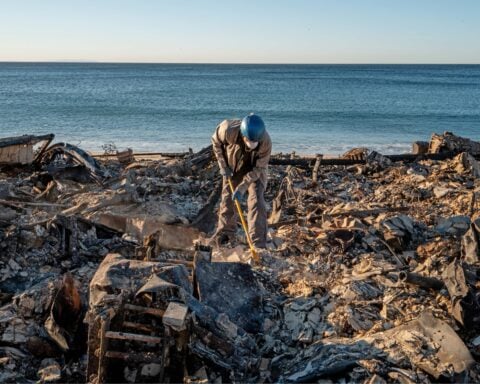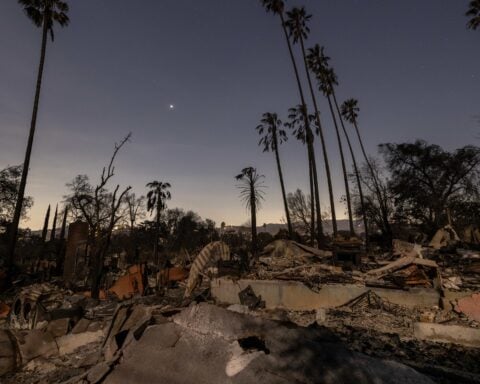WASHINGTON (AP) — A fiery January crash of a B-1 bomber in South Dakota was caused by multiple crew failures, terrible winter weather and a last-minute brush with wind shear that resulted in all four members ejecting and the total loss of the $450 million warplane, Air Force Global Strike Command said Thursday.
The command’s report was unusually blunt in describing what the investigation uncovered about the crews involved in the evening crash at Ellsworth Air Force Base. The investigators said the crash exposed an “organizational culture that tolerated decaying airmanship skills, a lack of discipline, poor communication, and inadequate focus on regulations."
The report is what is used to inform Air Force decisions on disciplinary action, so it is not yet clear whether any of the crew or their leaders will be disciplined as a result of the crash.
The B-1 is one of three long-range U.S. bombers. The supersonic aircraft carries conventional weapons and is capable of taking off from the U.S. to strike targets overseas in a single mission. The aging warplane is being maintained by the Air Force until the new B-21 Raider stealth bomber comes online.
On the night of the accident, the B-1 was the second of two bombers on a training flight that were about to land in quickly deteriorating winter weather. While both bombers came in too low for the weather they were facing, the first was able to correct its speed and altitude to land in visibility so poor the control tower could see neither the bomber nor its taxi lights once it landed.
The second bomber also came in too low, but inside the cockpit, the crew was not doing what was required — relaying specific communications to one another and taking responsibility to monitor and cross-check the aircraft's instrument readings to ensure they maintained the needed speed, altitude and descent.
In the final 55 seconds of flight, the bomber encountered wind shear, and the pilot's reactions resulted in the aircraft losing too much power. But neither the pilot nor a supervisory instructor pilot caught that in time, because they were looking outside the aircraft instead of monitoring their instruments, and the required communications that might have caught the error did not occur.
Another crew member responsible for assisting with cross-checking testified they were reading a post-landing checklist instead of backstopping the instruments, the investigators found. The flight became unrecoverable. As the B-1 hit the ground short of the runway all four crew members successfully ejected.
Almost every part of the flight exposed problems, even the ejection, the investigation found.
While the scathing report has suggested there may be larger issues at Ellsworth to address, it also has raised questions on whether continued strain on personnel, resources and aircraft availability — an issue that military aviation overall is facing — played a role.
Primarily, communication and supervision had eroded not only inside the crashed bomber, but also within its squadron and even from the control tower. A pre-flight squadron brief did not include a key advisory that required the crews to approach at a higher altitude, given the lost visibility, and investigators found that none of the eight aviators aboard the two bombers knew the Air Force's instructions for the cold weather they were flying in. There was a “willful disregard” for the equipment each crew member was required to wear, a lack of which was found possibly to have added to the injuries they received from ejecting.
After the crash, two members of the maintenance crew failed toxicology tests. And while each crew member survived, the instructor pilot was injured during the ejection likely because he weighed at least the maximum of 245 pounds that the ejection seat could support. A few days after the crash he weighed in at 260 pounds, among many other discrepancies, the report found.
On the airfield, communications were also broken down. A key sensor on their runway that could have told the crews how bad visibility was had been malfunctioning for months, and while air traffic control knew it was broken, the squadron did not. At the time of the crash the control tower knew on-the-ground visibility was zero but did not communicate that to anyone, and neither did the first bomber. Even as the first of the two bombers flying that evening landed, it did not relay information back to the second aircraft that the visibility conditions were “minnest of mins,” the report found.
But ultimately, the second bomber crashed as a result of the crew having “succumbed to complacency and fixation, while the (instructor pilot) was ineffective in his crew leadership and instructor supervision duties,” the investigators found.
There are about 45 B-1 bombers still flying, split between Ellsworth and Dyess Air Force Base in Texas. After the crash Ellsworth’s remaining bombers and their crews were temporarily relocated to Dyess for operation and training.
Charles Hoffman, a spokesman for Global Strike Command, said it was notable that just a month after the crash and relocating, Ellsworth’s B-1s were able to regroup and were responsible for the successful retaliatory strikes on 85 Iranian Revolutionary Guard Corps targets in Syria in response to an attack on U.S. forces that killed three service members.
“They traveled over 30 hours non-stop, round trip, delivered the strike package, and returned to Dyess,” Hoffman said.
Prior to the accident, the flying hours and personnel at Ellsworth were stretched thin to maximize resources for operating the B-1 squadrons at Dyess, which may also have contributed to the accident.
Some crew members didn't get to fly nearly the number of hours per month needed to remain proficient. The report revealed the instructor pilot had flown just 5.6 hours in the B-1 in the 60 days prior to the crash.
Many mid-level leadership posts responsible for supervision and for ensuring critical flight information was disseminated were left unstaffed, “severing the connective tissue” across the squadron and overwhelming the officers who were left to complete those leftover tasks. As a result, many tasks were pushed down to more junior aviators.
At the time of the mishap the 34th Bomb Squadron director of operations “testified that he elected to focus on administrative office work,” despite the worsening weather and knowing he had a junior non-instructor pilot serving as the flight supervisor.
The breakdowns “all speak to culture and leadership issues,” the investigation found.

 Bangladesh Supreme Court acquits ex-Prime Minister Zia, clearing the way for her to run in elections
Bangladesh Supreme Court acquits ex-Prime Minister Zia, clearing the way for her to run in elections
 British author Neil Gaiman denies ever engaging in non-consensual sex as more accusers come forward
British author Neil Gaiman denies ever engaging in non-consensual sex as more accusers come forward
 A look at the events that led up to the detention of South Korean President Yoon Suk Yeol
A look at the events that led up to the detention of South Korean President Yoon Suk Yeol
 Two private lunar landers head toward the moon in a roundabout journey
Two private lunar landers head toward the moon in a roundabout journey
 TikTok preparing for U.S. shut-off on Sunday, The Information reports
TikTok preparing for U.S. shut-off on Sunday, The Information reports
 Japan's Makino Milling requests changes to unsolicited bid from Nidec
Japan's Makino Milling requests changes to unsolicited bid from Nidec
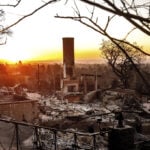 As Los Angeles burns, Hollywood's Oscar season turns into a pledge drive
As Los Angeles burns, Hollywood's Oscar season turns into a pledge drive
 As fires ravage Los Angeles, Tiger Woods isn't sure what will happen with Riviera tournament
As fires ravage Los Angeles, Tiger Woods isn't sure what will happen with Riviera tournament
